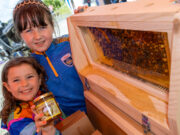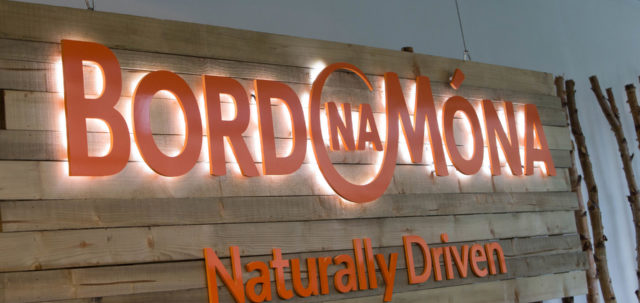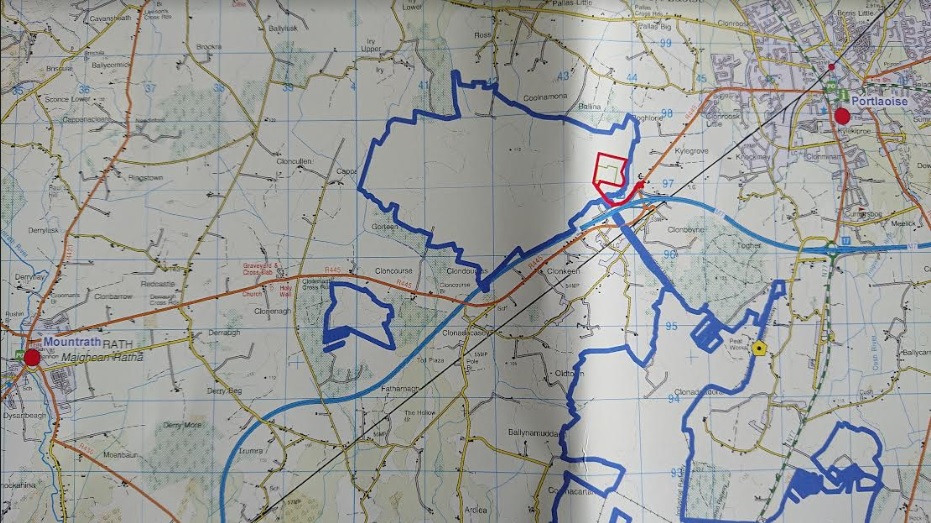Bord na Móna have unveiled plans for a major renewable gas facility at Cúil na Móna near Togher outside Portlaoise.
The semi-state company engaged in a number of information briefings to explain their intentions this week.
The proposed development will be located on Cúil na Móna Bog in the townland of Clonboyne, just off Junction 18 of the M7 motorway about 3km north west of the existing Cúil na Móna works.
The renewal gas plant would be located about 2km from Portlaoise town and is close to Togher, near the Portlaoise Rugby Club grounds.
It is intended that the renewable gas facility will treat up to 80,000 tonnes of non-hazardous, biodegradable and organic materials annually according to the company.
In other words it will primarily harness the gas energy from farm slurry and food offal. This will include a combination of commercial food waste, brown bin waste, animal slurries and some purpose grown crops.
It is projected that the plant will produce enough renewable biogas to supply about 5,500 per annum. It will use a well-established process known as Anaerobic Digestion (AD) to convert the organic materials into biogas.
The biogas produced will be upgraded to produce a purer biomethane, equivalent to natural gas, which in turn will be injected into the national gas grid nearby.
As the company continues to diversify and divest itself of its previous core operations of peat harvesting it is constantly transitioning to decarbonising.
In the process it is constantly looking at alternatives, so far mostly in the waste and energy fields, through waste collection and disposal operations and the development of wind farms.
In Lough Boora and Lullymore in Offaly and Kildare it has developed highly successful tourist and visitor attractions on the cutaway and it is also exploring horticulture options on parts of the bog for fledgling enterprises like Móna Herbs. There is no mention of any such projects in Laois to date.
For a number of years Bord na Móna unsuccessfully pioneered the idea of abstracting water from the Shannon and storing the harvested water supply in a new reservoir at Garryhinch, Portarlington.
It was envisaged that the reservoir would service the growing water supply demands for the greater Dublin area as well as doubling as an outdoor amenity and nature reserve comparable to other such developments in the UK and EU.
This proposal which would have required a partnership with Irish Water and an investment of about €800m has now been abandoned, as it failed to secure sufficient political or public support.
In October last year Bord na Móna launched its Brown to Green strategy that aligns the company with national and EU decarbonisation policies.
The company said that it now aims to “accelerate the development” of renewable energy assets to support the national climate and energy policy targets as well as accelerating investment in higher value recycling and resource recovery business.
One such energy source is biomethane, the renewable form of natural gas, which the proposed Portlaoise project will produce through the biological treatment of non-hazardous, biodegradable, organic waste materials.
Meeting the same quality standards as natural gas, it will be injected into the existing gas network where it will supply homes, businesses and other gas users.
The proposed project will also produce a nutrient rich bio-fertiliser which will be suitable for land spreading on agricultural land and Bord na Móna say this by-product from the Anaerobic Digestion process will provide a lower cost sustainable alternative to traditional organic and chemical fertilisers.
From a government policy perspective the Portlaoise plant would contribute to both Ireland’s and the EU’s renewable energy targets and will assist in the reduction of greenhouse gas emissions for sectors such as agriculture, heating and transport.
Before the project can proceed it will require planning permission from Laois County Council.
Due to the nature and scale of the planned development an Environmental Impact Assessment (EIA) will also have to be carried out.
The proposed facility is designed to treat 80,000 tonnes of organic waste material each year and while it will generate biogas on a continuous, 24/7 basis the company state that materials will only be accepted and outputs removed during the scheduled opening hours of the plant and that no materials will be accepted on Sundays or Bank Holidays.
The renewable gas facility at Cúil na Móna if it gets the go ahead would comprise of reception buildings, a tank farm comprising primary and secondary digesters, a gas upgrade plant and a covered digestate lagoon for the by-product.
Access to the proposed development will be from the R445 using the existing local access road and Bord na Móna entrance.
Materials will be delivered to the site using both refuse collection vehicles and articulated bulk carrier trucks. Digestate will be removed during the spreading season by vacuum tankers.
Permission will be sought for about 20 deliveries of feedstock materials each day throughout the year. Permission will also be sought for up to 55 tanker trucks per day for digestate removal at the peak of the land spreading season.
It is proposed to connect the development to the existing gas networks by laying about 2.3km of new gas pipework from the Bellingham Housing Estate, along the R445 road and along the access road to the injection plant on the Cúil na Móna site.
In the event that gas cannot be injected into the network it can be stored with the digester vessels for up to 5 hours.
For longer interruptions, such as maintenance, the gas can be safely flared in the gas flare stack.
The company in their information material outline that they also have comprehensive odour and noise management controls which will all be subject to EPA approval and licence as well as vermin and pest control measures.
In line with the Nitrates Directive Open Spreading Period Requirements for slurries, digestate will be removed from the site for land spreading from January 16 to October 14 each year, in bulk containers.
The development of the project is thought to provide about 100 jobs at peak construction.
Once operational there will be 8 to 10 long term jobs in operations and maintenance of the plant. Rates from the plant will accrue to Laois County Council.
SEE ALSO – 2004 Local Election Memories: No TDs, some PDs, a Sinn Féin breakthrough and a split in FF























